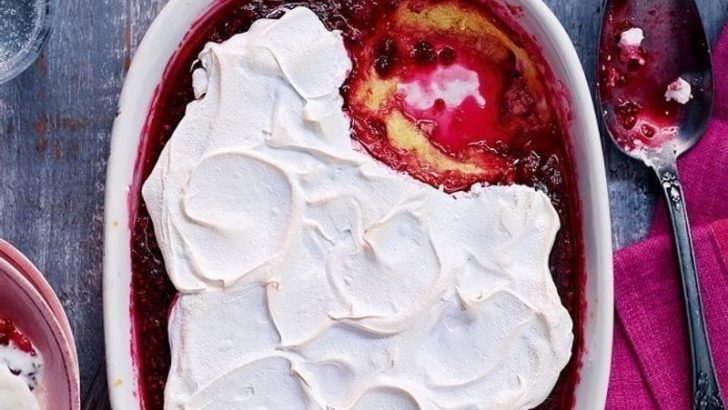In the culinary world, trends come and go, with some dishes becoming timeless classics, while others fade into obscurity. Desserts, in particular, often reflect the changing tastes and cultural influences of their time. Over the years, several once-beloved sweet treats have slipped away from our tables, leaving only a trace in family cookbooks and the memories of those who savored them. This article delves into thirteen such desserts, each with its own unique story and flavor profile, that were once staples in kitchens but have since disappeared from most modern menus.
1. Floating Islands
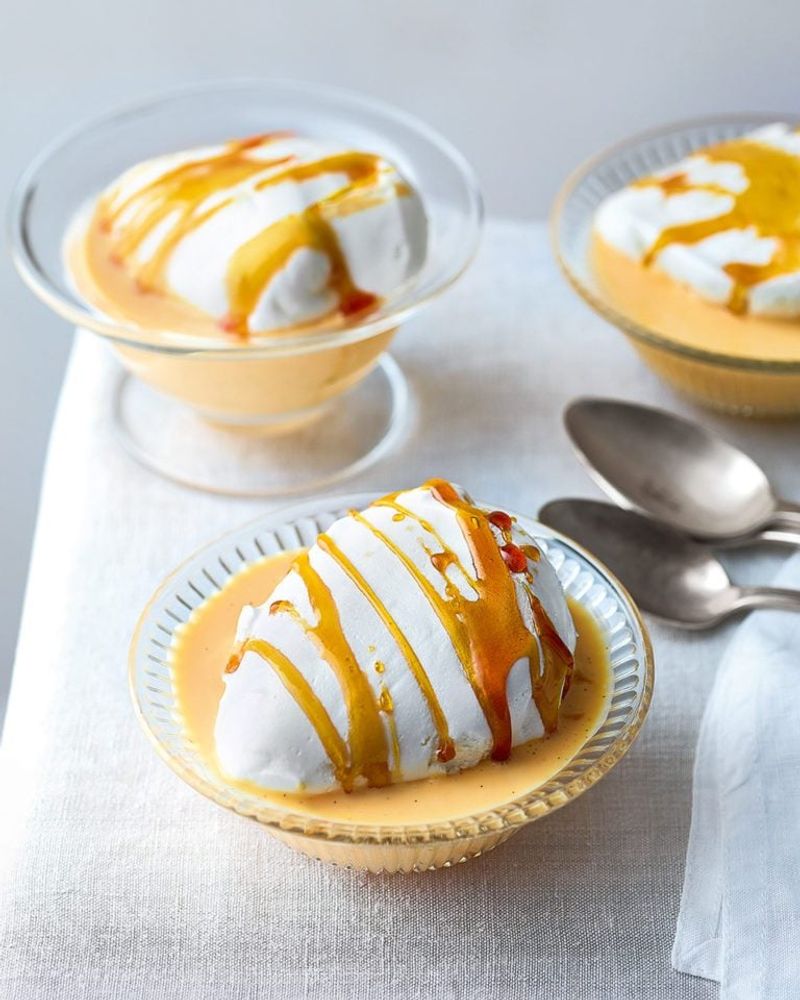
Imagine a dessert where clouds of meringue gently float on a rich, creamy sea. Floating Islands, or ‘Îles Flottantes,’ captured the hearts of many with their ethereal charm. The lightness of the meringue, paired with the smoothness of crème anglaise, offered a textural contrast that was irresistible. This elegant dish graced many dinner parties in the past, showcasing culinary finesse. Though it was a favorite among the French, its allure reached far beyond. Pictures of this dessert often evoke nostalgia, yet, today, few attempt its delicate creation. What a loss for dessert connoisseurs!
2. Charlotte Russe

Charlotte Russe, with its regal name and presentation, was once the star of dessert tables. Comprising layers of sponge cake or ladyfingers and luscious Bavarian cream, it was as much a feast for the eyes as the palate. This dessert was a favorite during the Victorian era, showcasing sophistication and class. Its origins are attributed to French chef Marie-Antoine Carême, who named it in honor of his royal patrons. The elaborate preparation required to make Charlotte Russe ensured that only those with a penchant for culinary arts attempted it. Today, its legacy remains but its presence has faded.
3. Blancmange
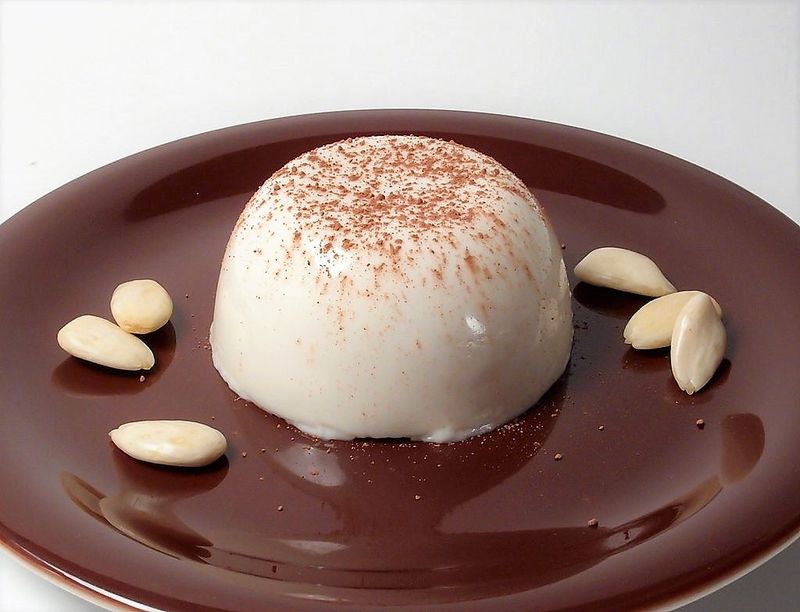
Blancmange, a dessert with a name as smooth as its texture, is a sweet almond-flavored jelly. Originating from medieval Europe, it symbolized refinement and luxury. Traditionally made with milk or cream, sugar, and ground almonds, it was a staple at elegant gatherings. The subtle sweetness and creamy consistency delighted those with a penchant for understated elegance. Its simplicity belies the sophistication it brought to any table. In recent times, it has been overshadowed by more colorful and complex desserts. However, its legacy as a classic continues to inspire chefs worldwide.
4. Tipsy Cake

Tipsy Cake, a dessert rich in history and flavor, was synonymous with celebration. This indulgent treat featured sponge cake soaked in sherry or brandy, layered with custard and adorned with candied fruits. Its origins date back to the 18th century, where it was a fixture at festive occasions. The name ‘Tipsy’ hints at the spirited essence brought out by the alcohol infusion. Over time, as tastes evolved and new desserts emerged, Tipsy Cake slowly retreated into the culinary shadows. Yet, for those who remember, it remains a nostalgic reminder of lavish gatherings and hearty laughs.
5. Syllabub

Syllabub, a frothy concoction of cream, wine, and citrus, was once a fashionable dessert in England. Known for its airy texture and tangy flavor, it graced the tables of many a noble banquet. The tradition of making Syllabub involved a theatrical process of whipping the ingredients until they achieved the perfect froth. Often garnished with nutmeg or lemon zest, it was a visual and gustatory delight. Although it has mostly disappeared from contemporary menus, its legacy survives in the annals of English culinary history. A resurgence of interest could bring this classic back to life.
6. Nesselrode Pudding

Named after Count Nesselrode, this luxurious pudding was a 19th-century favorite. Made with chestnuts, candied fruits, and cream, Nesselrode Pudding was a symbol of opulence. Its preparation was intricate, often reserved for special occasions. The dessert’s distinct flavor profile, combining sweet and nutty elements, made it a sought-after delicacy. Though it once held a prominent place in high society menus, its complex recipe has led to its decline in popularity. Today, it stands as a testament to the extravagant culinary practices of yesteryears, waiting to be rediscovered by adventurous palates.
7. Rhubarb Fool

Rhubarb Fool, with its whimsical name, is a dessert that perfectly balances tart and sweet flavors. This simple yet delicious treat combines stewed rhubarb with sugar and cream, creating a delightful pink and white swirl. Traditionally served in the spring when rhubarb is at its peak, it was a favorite for its freshness and ease of preparation. The dessert’s origins can be traced back to medieval times, highlighting its long-standing appeal. Though it has fallen out of favor, Rhubarb Fool remains a cherished memory for those who experienced its cheerful flavors during family gatherings.
8. Baked Alaska

Baked Alaska is a masterpiece of culinary engineering. This dessert combines layers of sponge cake and ice cream, enveloped in a meringue shell, which is then browned to perfection. The contrast of hot and cold elements made it a spectacle at dinner parties. Baked Alaska’s origins are linked to the celebration of Alaska becoming a U.S. territory, thus its name. The skill required to bake the meringue without melting the ice cream added to its allure. Despite its past popularity, the complexity of preparation has led to its rarity in modern kitchens.
9. Junket
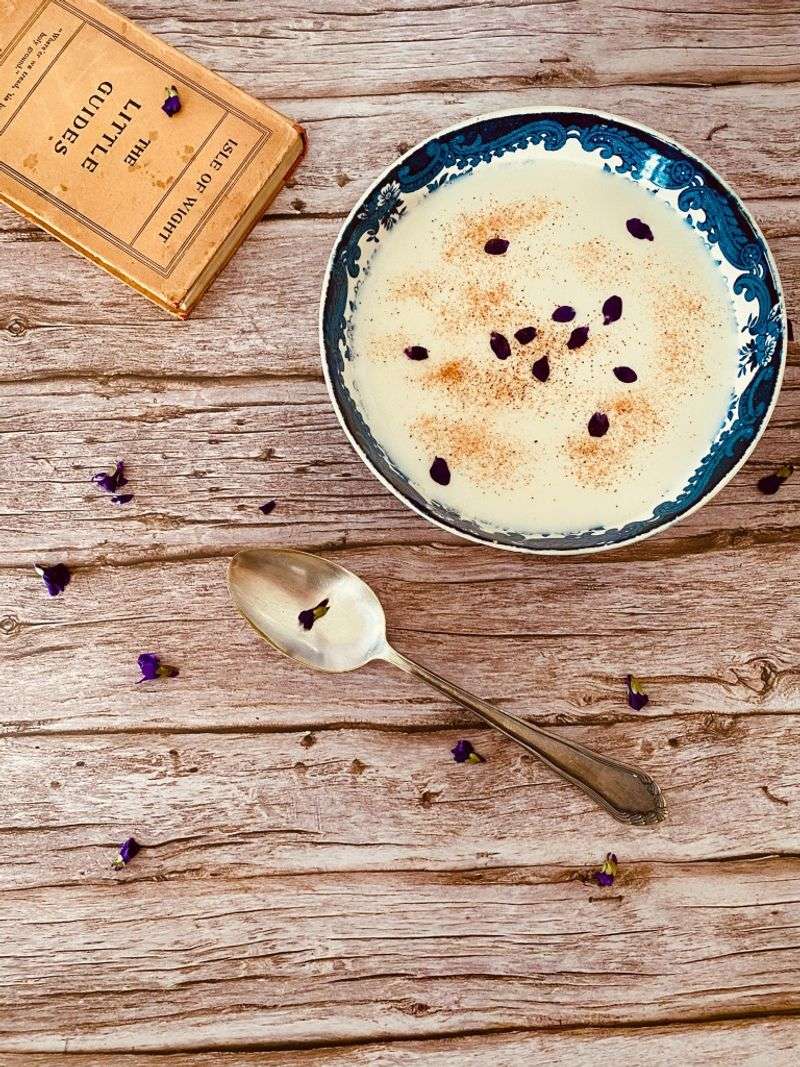
Junket, a humble yet comforting dessert, was once a staple in many homes. Made with milk, rennet, and a touch of sugar, its silky texture and mild sweetness were cherished by young and old alike. Originating from medieval times, it was often flavored with spices or fruit. Junket was particularly popular in regions where dairy was abundant. Over time, as tastes shifted towards richer desserts, Junket faded from the culinary scene. Those who remember it often recall its simplicity and the nurturing warmth it brought, especially during chilly evenings. Rediscovering Junket could rekindle fond memories for many.
10. Queen of Puddings
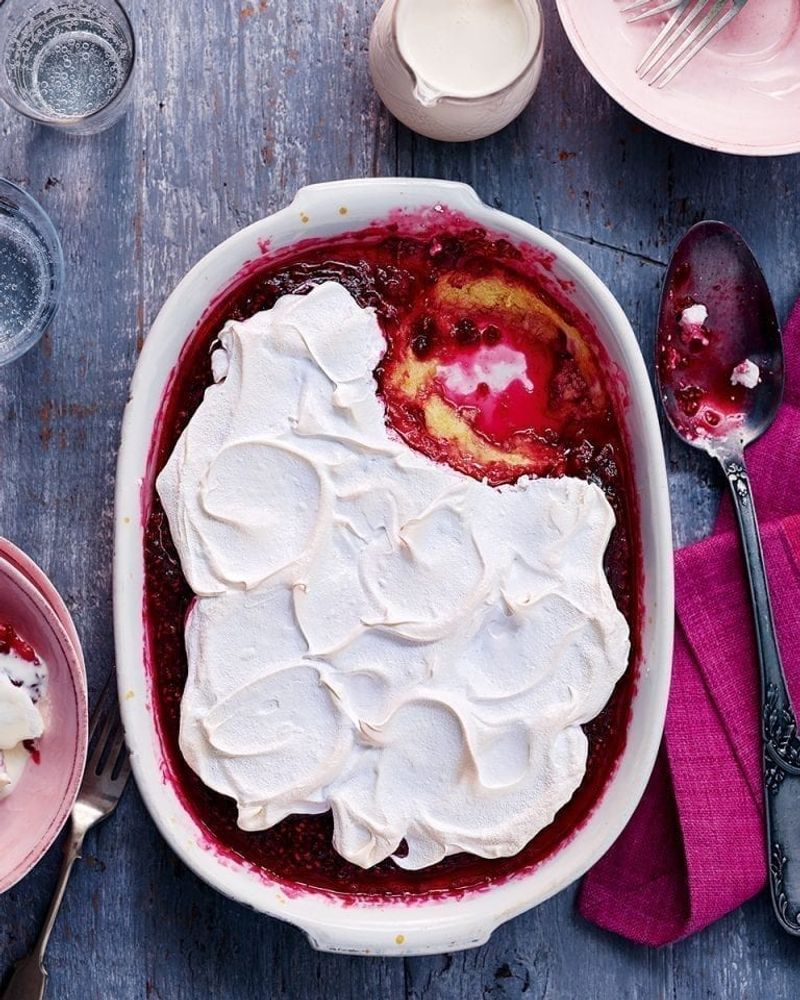
The Queen of Puddings is a regal dessert that lives up to its majestic name. Comprising a breadcrumb base soaked in milk, topped with a layer of jam and crowned with meringue, it was a British classic. Its simplicity was its charm, providing comfort and indulgence. This pudding found favor in many homes due to its use of readily available ingredients. The contrast of the sweet meringue with the tart jam created a delightful experience. Although it has lost its widespread appeal, the Queen of Puddings evokes nostalgia for traditional British culinary artistry.
11. Cabinet Pudding
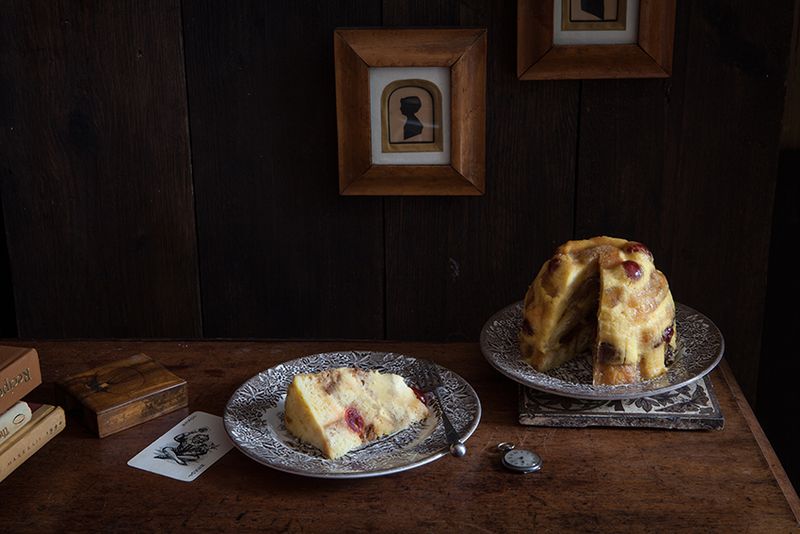
Cabinet Pudding, a showcase of excess and extravagance, was a Victorian-era delight. Made with layers of bread, custard, and a mixture of dried fruits and nuts, it was a celebration of textures and flavors. Often steamed to perfection, it was a centerpiece at grand gatherings. The name ‘Cabinet’ is thought to refer to the eclectic mix of ingredients, akin to a cabinet of curiosities. While its preparation is relatively straightforward, the pudding’s opulence lies in its rich ingredients. Today, it’s rarely seen, preserving its status as a relic of lavish Victorian indulgence.
12. Eccles Cake
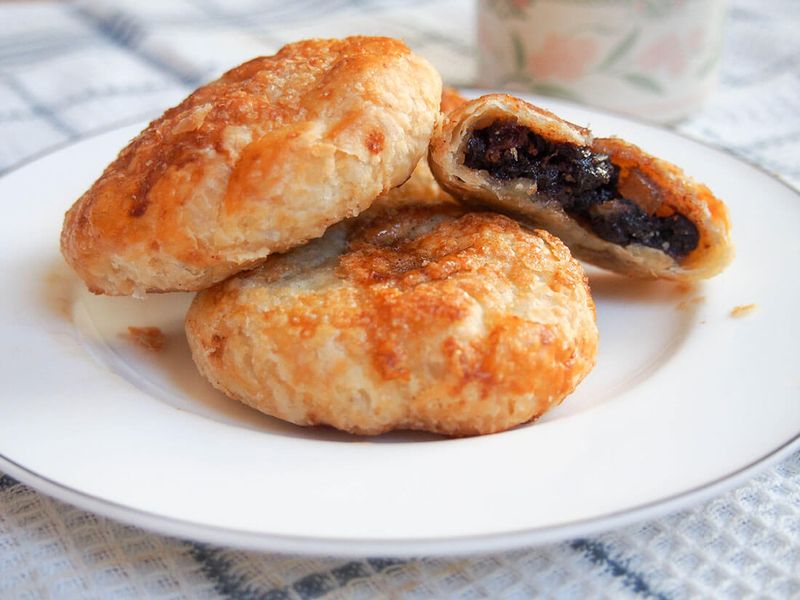
Eccles Cake, named after the town of Eccles in England, is a pastry filled with currants and spices. With a history dating back to the 18th century, it was a popular snack enjoyed with tea. The flaky, buttery crust provided the perfect vessel for the spiced fruit filling, offering a delightful contrast in textures. Despite its simplicity, the Eccles Cake was celebrated for its robust flavors and satisfying sweetness. While it has been overshadowed by more modern pastries, those who savor its taste are often transported back to cozy afternoons by the fire, enjoying a quintessentially British treat.
13. Opera Cake

Opera Cake, a French patisserie classic, is a harmonious blend of flavors and textures. This dessert consists of layers of almond sponge soaked in coffee syrup, alternated with coffee buttercream and chocolate ganache. Each bite offers a symphony of rich and aromatic notes. Its creation is attributed to French pastry chefs in the 19th century, who sought to capture the essence of opera through this elegant cake. Though it requires meticulous attention to detail, the reward is a luxurious dessert experience. Opera Cake’s complexity has resulted in its rarity, yet it remains a treasure for those who appreciate fine patisserie.

Well, hello there!
My name is Jennifer. Besides being an orthodontist, I am a mother to 3 playful boys. In this motherhood journey, I can say I will never know everything. That’s why I always strive to read a lot, and that’s why I started writing about all the smithereens I came across so that you can have everything in one place! Enjoy and stay positive; you’ve got this!

